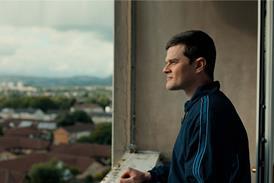Brussels-based Hélène Cattet and Bruno Forzani premiere their fourth film in Berlin competition
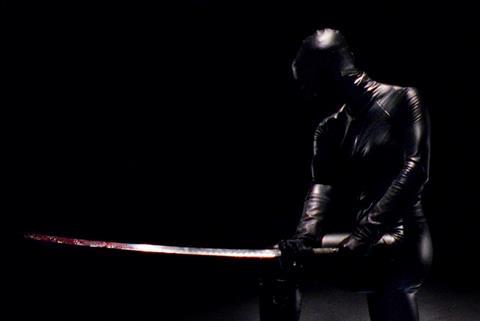
Dir. Hélène Cattet, Bruno Forzani. Belgium/Luxembourg/France/Italy 2025. 87mins
Hardcore modernists committed to living in the past, Brussels-based duo Hélène Cattet and Bruno Forzani have created their own extreme form of film language on the basis of passionate movie-geek nostalgia. Channeling and recombining elements of retro film styles – notably giallo horror and the 60s/70s Euro-thriller – they push the iconography of their beloved sub-genres to their furthest limits, amplified by frenzied rhythmic editing that pushes imagery to the edge of abstraction.
Constantly refuses to let a conventional story materialise
That’s the theory, at any rate – and there are sequences in all the duo’s films that are undeniably exhilarating in their hyper-fragmented strangeness. But for long stretches, the deranged virtuosity can become deadening overkill – and that’s the case in Reflection In A Dead Diamond, the loose story of a 70-year-old man recalling his wild years on the Riviera in the 1960s. Arguably the duo’s most full-on exercise to date, this Berlin competition title is also the film in which they most seem to be repeating themselves. Niche outlets with a superfan constituency will embrace it, as will venues and festivals still flying the hallowed ‘midnight movie’ flag, but Reflection is unlikely to appeal to audiences not already infected by devout cine-fetishism.
Following two films that recrafted giallo tropes (Amer and The Strange Color of Your Body’s Tears) and 70s-style thriller Let The Corpses Tan (their most narratively coherent film, although ‘coherence’ is relative), the duo attempt to cross-pollinate the 60s European school of sub-007 knockoffs with a register of art-house stylisation, something like an acid-spiked version of Alain Resnais’ temporal fragmentation – if you like, Last Year In Casino Royale. There’s also a touch of the kind of genre subversion explored by Resnais collaborator Alain Robbe-Grillet in his glossier late work like La Belle Captive (and some of his S&M preoccupations too).
There appears to be a narrative of sorts, or perhaps just the impression of one – because Cattet and Forzani are committed here to a total demolition of linearity, in a way that could itself be considered a touch 1960s retro. What storyline there is involves an elderly man named John (veteran Italian star Fabio Testi, stately) who lives in an elegant hotel on the Côte d’Azur, paying for his room with the money from a cache of diamonds. When not eyeing young swimsuited women on the beach, he muses on his youth as a suave superspy (played by Yannick Renier).
We see the younger John assigned to safeguard an important figure named Marcus Strand (Koen de Boew), involved with an all-important source of energy for the future. Sinister figures are out to eliminate Marcus and John must stop them, in tandem with his femme fatale accomplice (Céline Camara), one of whose deadly tricks is to use her Paco Rabanne-style mirrored dress as a weapon; in one of the film’s ingenious touches, each round mirror from the garment doubles as a video recording device. But the duo haven’t reckoned with sinister ninja-like agent Serpentik (dancer and choreographer Thi Mai Nguyen), who seems to be not one but many women, and perhaps (in echoes of 8 ½) all the women that John has ever fought, or loved.
Those are the essential elements – which are reshuffled and replayed in multiple permutations – of a narrative which cannot be taken at face value. It may be that what we are watching is actually an espionage movie called Mission Serpentik in which the young John is playing a spy named ‘John’; or the evocation of a comic strip or alternatively a photo-novel about John’s battle with Serpentik; or a non-existent movie that a demented old John is ‘directing’ in his head from fragments of memory and pop culture. Or all of the above, or none.
What’s essential is that, from start to finish, Reflection taunts us with the possibility of a narrative, while constantly refusing to let a conventional story materialise, instead bombarding us with images. This is itself a traditional anti-narrative ploy, with the images repeating, distorting, rhyming, mutating throughout the film, sometimes to engaging effect: throughout, we get variations on diamonds glistening on flesh, repeated razor/sword/ fingernail slashings of skin, fabric, leather, masks. Any kind of smooth flow is disrupted by freeze-frames, smash cuts, sudden inserts of drawings, photos, shriekingly vivid color effects, while the use of sound comes to resemble a kind of dance music: notably in a fight in which Serpentik takes on a group of roughs to a rhythmic orchestration of swishes, slashes and crashes.
It’s all dazzling – more in the sense of blinding than impressing – but there’s little modulation to it, and some repetitions are worked to death. Cinematographer Manu Dacosse, editor Bertrand Beets and sound editor Dan Bruylandt all do knockout work throughout, as does designer Laurie Colson, working in references to period Op Art as well as the body painting style of Yves Klein et al. But for all its technical hyper-brio, this work feels as exhausting as a 200mph heavy metal guitar solo, and less like a film – even a really challenging avant-garde one – than a de luxe, disconnected storyboard for itself.
Production company: Kozak Films
International sales: True Colours, sales@truecolours.it
Producer: Pierre Foulon
Screenplay: Hélène Cattet, Bruno Forzani
Cinematography: Manu Dacosse
Editor: Bernard Beets
Production design: Laurie Colson
Main cast: Fabio Testi, Yannick Renier, Koen de Bouw, Maria de Madeiros

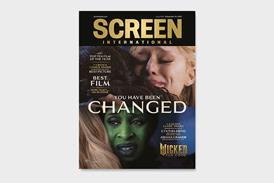
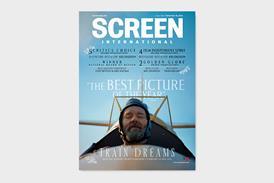






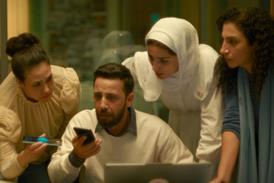



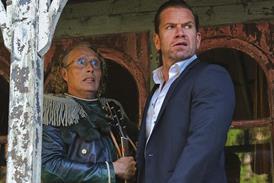

![[Clockwise from top left]: Paul Thomas Anderson, Chloe Zhao, Ryan Coogler, Park Chan-wook](https://d1nslcd7m2225b.cloudfront.net/Pictures/274x183/9/0/0/1467900_writerdirectors_192733.jpg)
